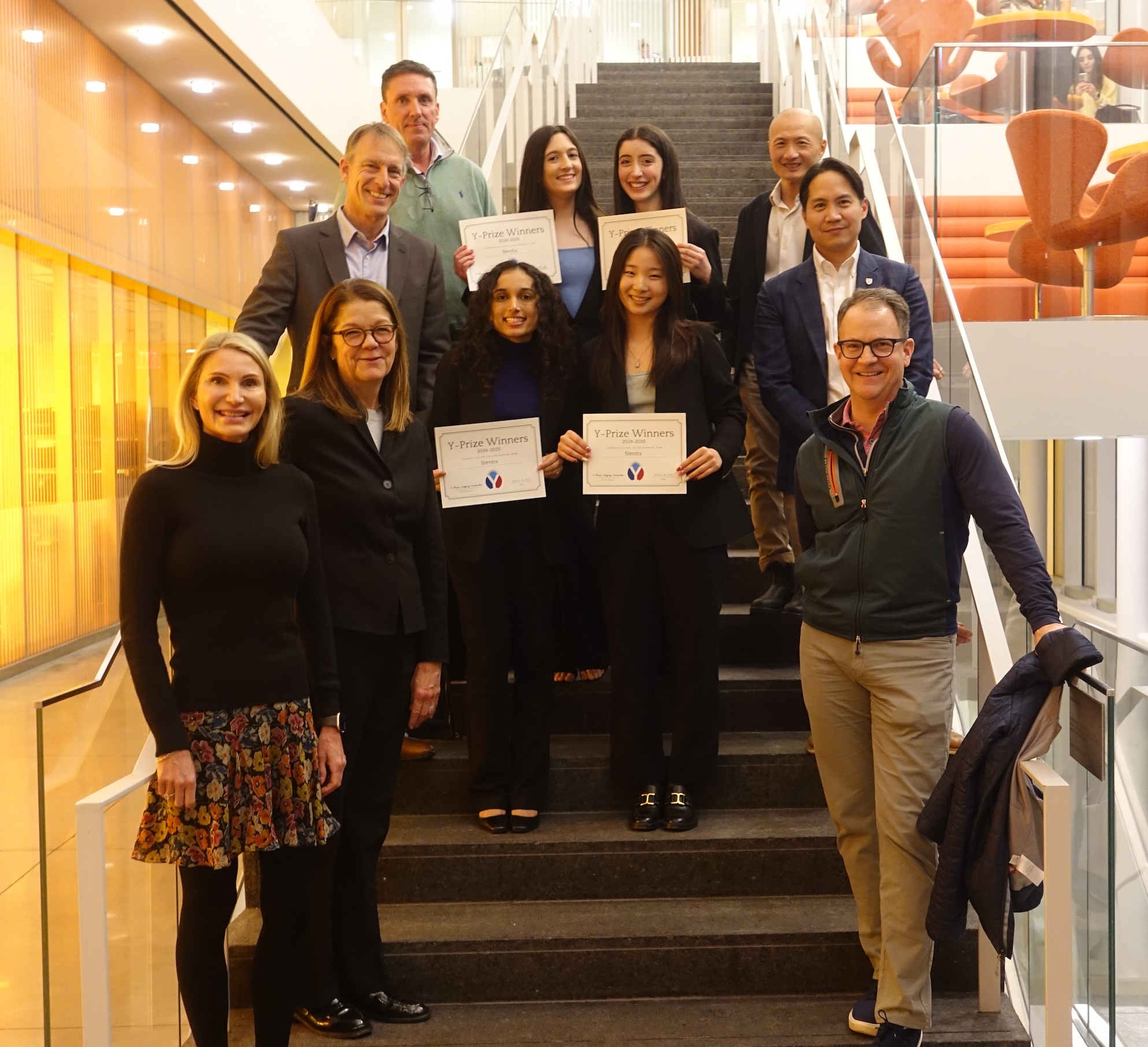
This year’s Y-Prize competition winner is an ambitious team of undergraduates aiming to bring Penn-developed technology to patients suffering with bile duct obstructions. Their proposed product, Stentix, has been awarded $10,000 to get this work off the ground with preliminary research and prototype design throughout the next five years.
The Y-Prize, a competition that challenges Penn students to build their entrepreneurial skills, is cosponsored by Penn Engineering, the Mack Institute, Venture Lab, and the Penn Center for Innovation. In this competition, which has been held on campus for 10 years, students team up to create business plans using technology invented at Penn Engineering. The team with the best commercial application wins $10,000 to help make their idea a reality.
This year’s winning team includes undergraduate and accelerated master’s student Summer Cobb in Mechanical Engineering and Applied Mechanics (MEAM) at Penn Engineering, and three members of the dual-degree Vagelos Life Sciences and Management Program between the College of Arts and Sciences and Wharton: Amanda Kossoff in Biology and Business Analytics, Elizabeth Jia in Neuroscience and Finance and Aarsha Shah in Biology and Finance. Nuzhat Ahmad, Professor of Medicine (Gastroenterology) at the Hospital of the University of Pennsylvania, mentored the team in exploring disease applications for their stent and refining its implementation strategy within academic hospitals.
Biliary stents are small, tube-like devices inserted into the bile ducts to help maintain bile flow from the liver to the small intestine. They’re often used to treat blockages caused by conditions such as pancreatic cancer, gallstones or complications from liver transplants. However, these stents can easily become blocked or dislodged, leading to the need for invasive procedures like endoscopy for repositioning or replacement. Together, the Stentix team makes use of MORF, a magnetic, self-reconfiguring “origami-style” material invented in Penn Engineering’s Sung lab, to address these challenges and help patients who are already suffering with more serious medical conditions avoid additional pain, discomfort or medical complications.
MORF, which stands for Magnetic Origami Reprogramming and Folding System, is a technology that makes it possible to automatically create and reshape complex 3D structures. It works by using magnets to ‘program’ a flat sheet of material which can then fold into different shapes, like a high-tech version of origami. This process allows the sheet to change its form and size as needed, while also integrating active materials and electronic parts. The Stentix team will use MORF to expand and deflate a cylindrical-shaped stent, reacting to changes in the patient’s body.
“Before I even knew of the Y-Prize competition, I was introduced to this technology in my MEAM 2100 course,” says Cobb. “I wanted to learn more about the electromagnetic inner workings of MORF, and once I did, a list of ideas instantaneously flew into my mind. I was drawn to MORF’s versatility and the unique ways it could be applied across different fields. This excitement ultimately pushed me and my team to pursue MORF for the competition, knowing that no matter what application we decided on, it had the potential to solve problems in ways we have not yet imagined.”
MORF allows the stent’s position and diameter to be adjusted noninvasively via magnetic reconfiguration. This innovative application is a breakthrough that could drastically reduce the need for additional surgeries or discomfort for patients, and become applicable in other types of stents required for other medical treatments.
“Regardless of the technology we chose, we knew we wanted to focus on medical applications,” says Jia. “Patient lives can be completely transformed through such innovative devices, so we had a general idea of where we wanted to steer our pitch from the beginning. From there, we brainstormed potential applications, workshopping each one to ensure that there is a current, real problem faced by patients as well as a technological solution. We narrowed our idea down through an iterative process of listening to patient stories, thinking about how our tech could have a place in improving their experiences and whether the technology was actually capable of doing so.”
“We chose to focus on biliary stents in particular after extensive discussions with over 20 gastroenterologists and advanced endoscopists, recognizing their significant potential to improve patient outcomes,” adds Kossoff. “With a goal to reduce invasive procedures and address the serious risks of stent migration, particularly in patients with advanced diseases, we saw a unique opportunity to enhance both survival and quality of life.”
The team has a lot to do but plenty of motivation to get started.
“We’re incredibly excited to get started and can’t wait to dive into prototype development with the GRASP Lab,” says Shah. “Our team is also actively pursuing additional resources and funding, including applying for the Venture Lab’s Startup Challenge and the PCI I-Corps Program, and we’re deeply grateful for the opportunity to build on the momentum from Y-Prize and take this innovation to the next level.”
Other finalists in this year’s competition included Serpent, who proposed a flexible, remote-controlled robot arm for tree trimming; Agentis, with their pill-encased stent for gastric outlet obstruction; and EmBrace, who developed a smart brace for breast cancer survivors with lymphedema. Each of these teams presented impressive ideas with the potential to transform their respective fields.
Read the Mack Institute’s press release announcing Stentix as the winning team and follow their research journey.
